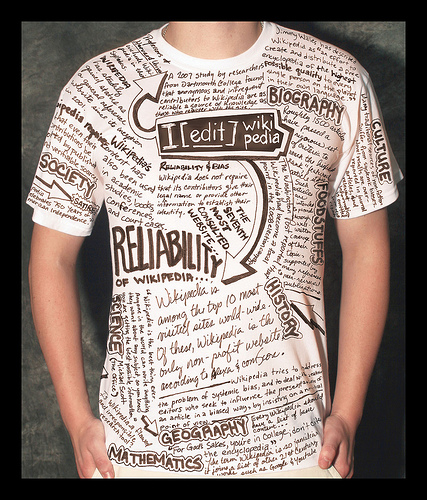Ellie Ivanova Ponti

Photo: quartermane
Speaking of fashion, I didn’t delve into the question whether style is really a personal expression of self identity or just a convention, a formula offered by society and used by an individual in one combination of elements or another. Is an individual ever free, after all, to use any piece of clothing in her or his own terms to express her or his own identity? If I think that a tea gown expresses my personality best of all, am I free to wear it for an evening out without any repercussions?
No. Fashion, if not a mandatory convention, is at least a vocabulary where clothing pieces are words with their own meaning which we can’t disregard in communication. I can’t use a certain kind of dress just because it corresponds to my internal inklings if I disregard its meaning to everyone else and expect those around me to interpret it in my way.
But still, there is a garment that is probably the most liberated and plastic, in terms of meaning and use. The T-shirt! I would call it probably the most democratic and individualistic fashion tool I know. Unless you point out another one that I may be neglecting.
First, a look at its history. It may have started as an undergarment for sailors named singlet in the early XIX century – think graphic white-and-blue stripes and sea-related romance.Bbut now it is predominantly an outer-garment, apparently because of Hollywood macho-image influences. It seems it first got its prints in the 40s, with a political campaign. Here is a brief history.
What is important is that this garment turned out to be so simple that it was possible to turn it into a blank canvass and from there, into a powerful tool for self-expression. Everyone can use this tool in a concretely individual way. And that use is not realized by a passive decision-making as of what shirt to buy among what is already available. It is a tool that can be used actively to symbolically forge according to a personal taste: you can make the t-shirt yourself. But unlike clothes that you knit or sew yourself, a t-shirt in its physical form is already there and is not part of the identity-creation process.
This easiness and flexibility of using a t-shirt as an identity tool is possible because the most important part of a t-shirt is not just its fabric, although it helps if it is durable. Its shape is almost always a constant, so it is not a tool to create meaning itself either. But the letters, images and signs on it are. They are the meaning-creating tool that gives power to the t-shirt.
Think about the countless ways they can be used. They express allegiance to a rock band. Mark the members of a family-reunion party or a group of field-tripping schoolkids, for identification or pride-boosting purposes. Publicize a political opinion or a charitable cause. Just go to a t-shirt printing website or visit a printing stand at a mall and you can start expressing yourself verbally in a unique way.
T-shirts are probably the most versatile token of globalization. They are popular in all cultures at this point, their spread facilitated by global tourism, low cost and pop-culture influences. They are worn by people of all ages, from babies to old folks and from hippies to commercial brand logo snobs. They are the most convenient tourist souvenir, both to buy from a specific city (like “My parents went to Chicago and all they brought me was this t-shirt”) and to give to local hosts.
The advantages of t-shirts compared to hand-held signs, tattoos or bumper stickers as identifiers? You can take it off at any time and so vary the image you are projecting to express a multifaceted persona. You can wear it, on your torso at that, thus symbolically associating your persona with the message on it. The identity it projects becomes a second skin which is much more difficult to be separated from the person wearing it.
The disadvantages? You can’t wear an old t-shirt you’ve grabbed from your dresser without considering the message it conveys and its appropriateness for what you’ll be doing. You can’t wear a political t-shirt when you teach. You can’t wear one of those dirty-joke t-shirts when you are visiting your grandmother in the hospital.
I love how the concept of the t-shirt fits Baudrillard’s ideas on simulacra. But… more on that some other time.
You can read other articles by Ellie Ponti on her blog.











No comments so far ↓
Nobody has commented yet. Be the first!
Comment